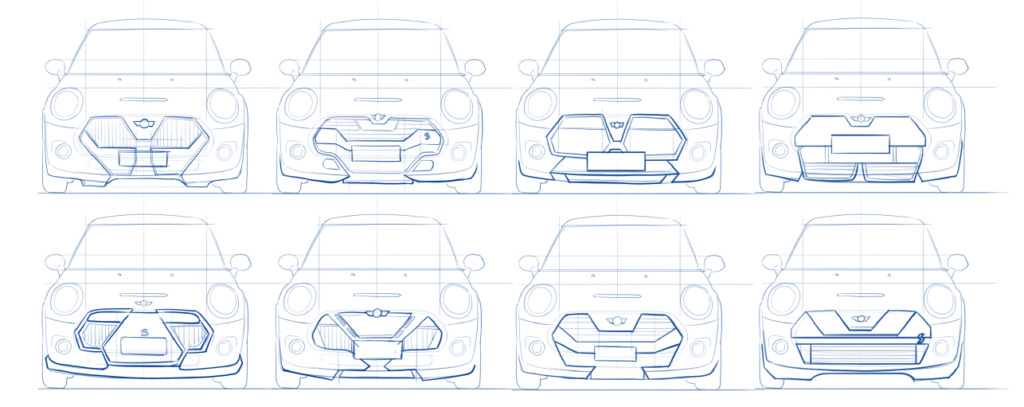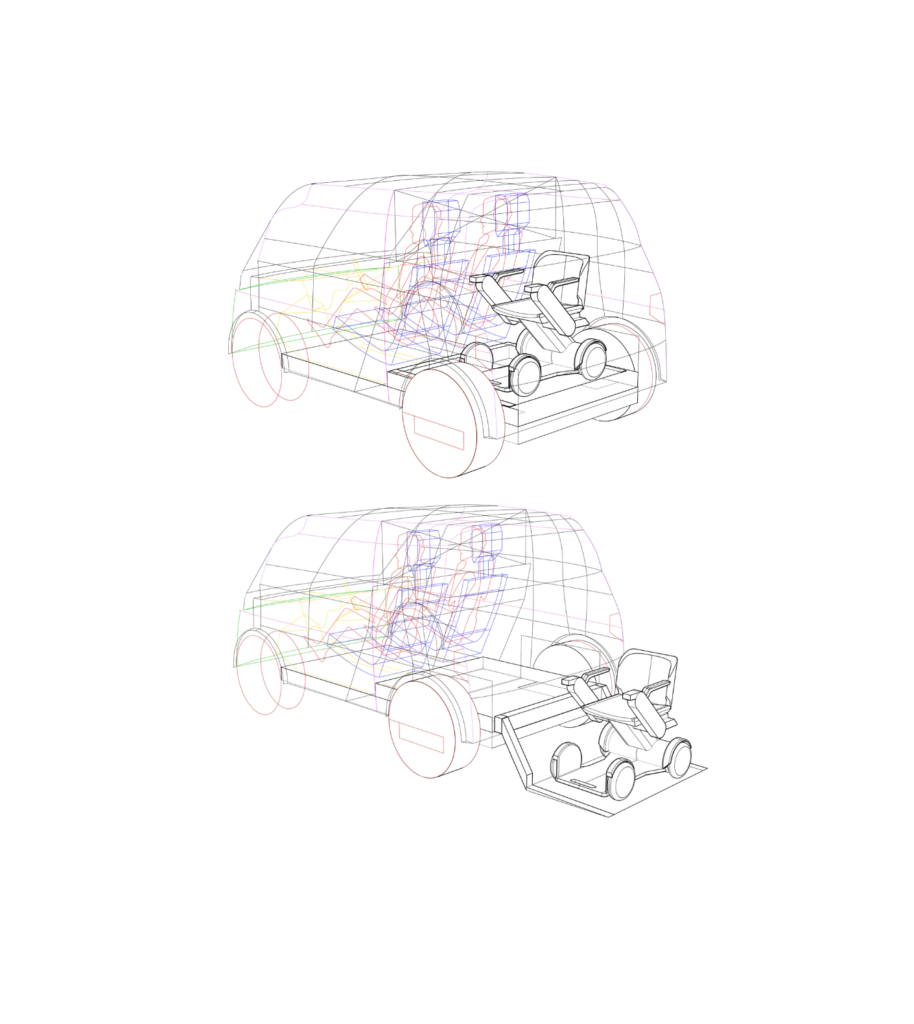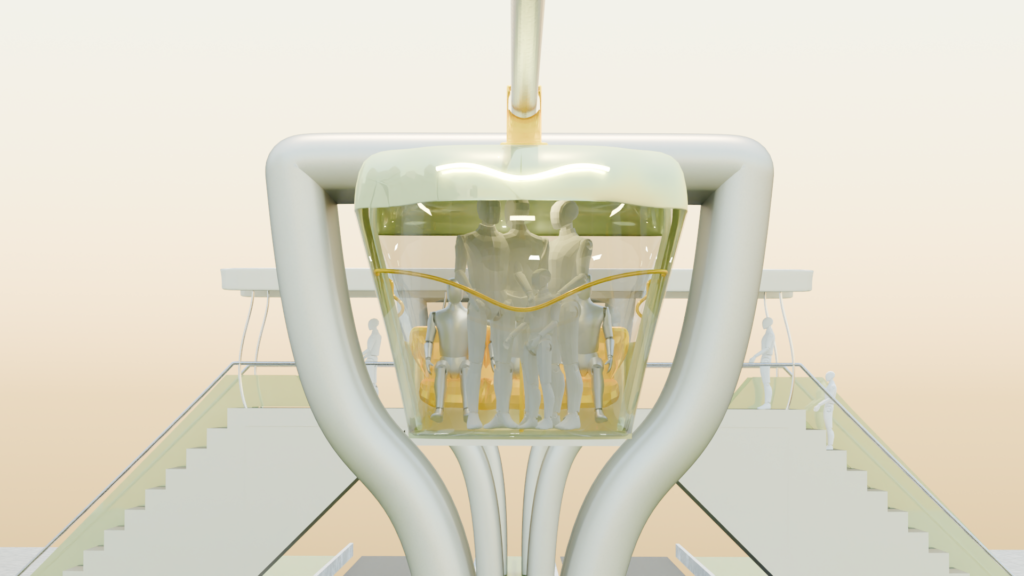Project
Future Mobility Design
A bsc-minor followed at the TU Delft 2024/25
Restyling an existing model
For this project I restyled the Mini Cooper SE by Go Sharing. I focussed on the brand image and brand identity of Go Sharing and together with field trip such as visiting the Louwman museum, I made design choices. Talking to experts, mini cooper owners and stakeholders let me restyle the existing model to a more suited look.

What did I learn?
Designing outside-in
In this project I made use of the 'design outside-in method', which emphasizes starting with the car's aesthetics, form and style, while drawing inspiration from the brand’s image, identity, and vehicle character to make design choices. A really different approach to designing then I am used to, but it was a fun process and it is definetly a method I will be using again.
Working together while working alone
Whilst this was an individual project, I still worked as much with others as possible. People like car showroom employees, car owners and my peers helped me to get feedback throughout the whole process, helping me forward towards quality end results
Digital sketching
Although I was already quite experienced with digital sketching, this project definetly boosted my abilities in this field. I did almost all my concept sketching on my drawing tablet in photoshop. This gave me the opportunity to easily change or highlight certain elements, which results in a lot of freedom when iterating.

Creating a package design
For this team project, we designed a compact vehicle for a specific area in Rotterdam. Using the inside-out design approach, we focused on functionality and space efficiency to meet user needs, such as accommodating a wheelchair and a golf bag. After multiple iterations, including rapid sketching and two paper models, we translated our design into a CAD model. The final design included a partly autonomous vehicle with a space-efficient layout, ensuring comfort and usability.
What did I learn?
Designing inside-out
In this project, I applied the "inside-out" design method, which taught me to prioritize interior functionality before focusing on the exterior. This method required me to think more critically about the needs of the user, ensuring that every element of the design contributed to both usability and comfort.
Utilizing 1:1 models
One of the key skills I developed was using 1:1 paper models as part of the ideation process. This allowed me to experiment with the design at full scale, helping to visualize spatial relationships and really shaping the vehicle's layout before committing to the serious models. It was a great way to look for potential issues early in the design, aswell as being able to easily move back- and forwards with design choices.
Scenario building
Creating scenarios to test when and how the vehicle would be used in real life was an important part of the process. I learned to think about the different use cases the vehicle might be used in during the week .This helped me make sure the final design was both useful and practical, meeting the needs of the users.
Designing for Rotterdam in 2045
For my third project, I worked as part of a team to design a mobility system for the Rivium area in Rotterdam in 2045. The project was divided into a research phase and a design phase, where each team member designed a different transportation mode. My focus was on designing a medium public transport system that would connect the business district with the residential area of Rivium. I took inspiration from our vision of a connected, welcoming future and incorporated product qualities such as friendliness and familiarity. Using multiple sketches, collages, and Blender for 3D modeling, I helped create a cohesive, space-efficient monorail design called “Levo,” which promotes social interaction and ease of use.

What did I learn?
CAD modeling in Blender
I gained a lot of experience using Blender to visualize my designs in 3D. After learning the software through workshops and tutorials, I was able to create high-quality renders and animations, which helped bring my ideas to life. This skill significantly improved my ability to present and showcase my work in a professional way.
Time management
This project taught me valuable lessons in time management, especially when it came to meeting deadlines and managing progress. The "design freeze" phase was a pivotal moment, as it forced me to focus and finalize my design, preventing unnecessary revisions. Balancing research, ideation, modeling, and refinement leading up to the design freeze helped me stay on track and efficiently use the remaining time for final adjustments and presentations.
Collaboration and feedback
Working on a big team project like this, I really learned the importance of collaboration and regular feedback. We constantly shared ideas and used feedback from project coaches and peers, which allowed us to refine our designs and create a more cohesive final concept.